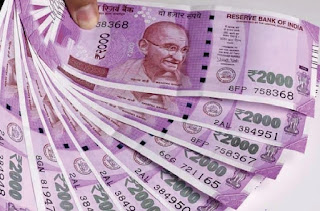12th Economics Book Back Question and Answer Tamil Medium & English Medium
Note:
- 12th std samacheer Kalvi NCERT ECNOMICS BOOK BACK Question and answers .
- 12th economics Katrathukalvi Kalvi guide Answers based on new syllabus.
- These Study materials help for your Board examination.
- You can get good marks your board examination.
- 12th Economics Important 2 mark questions
- 12th Economics important 3 mark questions
- 12th economics important 5 Mark questions.
12th Economics Book Back Question and Answer Tamil Medium & English Medium
Chapter 5 Monetary Economics
Monetary Economics is a branch of economics that provides a framework for analyzing money and its functions as a medium of exchange, store of value and unit of account. It examines the effects of monetary systems including regulation of money and associated financial institutions.
Money Definitions
Many economists developed definition for money. Among these, definitions of Walker and Crowther are given below:“ Money is, what money does”
- Walker.
“Money can be anything that is generally acceptable as a means of exchange and at the same time acts as a measure and a store of value”.
–Crowthre
1. The RBI Headquarters is located at
(a) Delhi
(b) Chennai
(c) Mumbai
(d) Bengaluru
2. Money is
(a) acceptable only when it has intrinsic
value
(b) constant in purchasing power
(c) the most liquid of all assets
(d) needed for allocation of resources
3. Paper currency system is managed by
the
(a) Central Monetary authority
(b) State Government
(c) Central Government
(d) Banks
4. The basic distinction between M1
and M2
is with regard to .
(a) post office total deposits
(b) saving deposits with post office
savings bank
(c) Terms deposits of banks
(d) currency
5. Irving Fisher’s Quantity Theory of
Money was popularized in
(a) 1908
(b) 1910
(c) 1911
(d) 1914.
6. MV stands for
(a) demand for money
(b) supply of legal tender money
(c) Supply of bank money
(d) Total supply of money
7. Inflation means
(a) Prices are rising
(b) Prices are falling
(c) Value of money is increasing
(d) Prices are remaining the same
8. __________ inflation results in a serious
depreciation of the value of money.
(a) Creeping
(b) Walking
(c) running
(d) Hyper
9. __________ inflation occurs when
general prices of commodities increases
due to increase in production costs
such as wages and raw materials.
(a) Cost-push
(b) demand pull
(c) running
(d) galloping
10. During inflation, who are the gainers?
(a) Debtors
(b) Creditors
(c) Wage and salary earners
(d) Govgalloping
11. ____________ is a decrease in the rate
of inflation.
(a) Disinflation
(b) Deflation
(c) Stagflation
(d) Depression
12. Stagflation combines the rate of
inflation with
(a) Stagnation
(b) employment
(c) output
(d) price
13. The study of alternating fluctuations
in business activity is referred to in
Economics as
(a) Boom
(b) Recession
(c) Recovery
(d) Trade cycle
14. During depression the level of
economic activity becomes extremely
(a) high
(b) bad
(c) low
(d) good
15. “Money can be anything that is
generally acceptable as a means of
exchange and that thesame time acts
as a measure and a store of value”, This
definition was given by
(a) Crowther
(b) A.C.Pigou
(c) F.A.Walker
(d) Francis Bacon
16. Debit card is an example of
(a) currency
(b) paper currency
(c) plastic money
(d) money
17. Fisher’s Quantity Theory of money
is based on the essential function of
money as
(a) measure of value
(b) store of value
(c) medium of exchange
(d) standard of deferred payment
18. V in MV = PT equation stands for
(a) Volume of trade
(b) Velocity of circulation of money
(c) Volume of transaction
(d) Volume of bank and credit money
19. When prices rise slowly, we call it
(a) galloping inflation
(b) mild inflation
(c) hyper inflation
(d) deflation
20. ___________ inflation is in no way
dangerous to the economy.
(a) walking
(b) running
(c) creeping
(d) galloping
Part – B
Answer the following questions in one or two sentences.
21. Define Money.
22. What is barter?
23. What is commodity money?
24. What is gold standard?
25. What is plastic money? Give example.
26. Define inflation.
27. What is Stagflation?
Part – C
Answer the following questions in one paragraph.
28. Write a note on metallic money.
29. What is money supply?
30. What are the determinants of money supply?
31. Write the types of inflation.
32. Explain Demand-pull and Cost push inflation.
33. State Cambridge equations of value of money.
34. Explain disinflation.
Part – D
Answer the following questions in about a page
35. Illustrate Fisher’s Quantity theory of money.
36. Explain the functions of money.
37. What are the causes and effects of inflation on the economy?
38. Describe the phases of Trade cycle.
